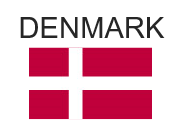
National Interoperability Framework
The National Interoperability Framework (NIF) is a set of standards, policies, and guidelines that ensure that information and communication technology (ICT) systems can communicate and share data seamlessly. It promotes the development of interoperable systems that facilitate data exchange and collaboration between different organizations and levels of government. The NIF provides a common language and a framework for ensuring that ICT solutions are compatible, secure, and reliable, which enhances the efficiency of public services and improves citizen outcomes.
Common Framework for Public-Sector Digital Architecture (NIF) Year: 2017 | The framework architecture describes the digital architecture in the form of reference architectures and building blocks. It builds on similar prior work, among other things. the previous joint public cooperation on architecture and standards (OIO), the architecture of the basic data programme, the health domain common architecture, the common municipal framework architecture and the pan-European interoperability reference architecture (EIRA). |
Good Practices
This section provides examples at the national level in line with a selection of different thematic areas of the European Interoperability Framework (EIF). Further initiatives and good practices are available in the country’s Digital Public Administration Factsheet.
All Danish public authorities are required to comply with the principles of the ISO 27001 standard for Information Security Management Systems, which act as the overall framework for working with information security in the public sector. Additionally, a number of mandatory technical requirements have been implemented in all national government authorities, including requirements for secure (encrypted) communication between authorities and when communicating with the public authorities via websites. Further guidelines concerning the implementation of ISO 27001 and other relevant security measures are available on the national information security portal. The Agency for Digital Government regularly performs follow-ups on the authority's compliance with ISO 27001 and the technical minimum requirements.
In Denmark, procedures have been in place since 2018 to screen all legislative proposals for their 'digital-readiness'. A subset of legislative proposals are selected for a more thorough reading: of the approximately 200 legislative proposals in the government's legislative programme, it is expected that half will be "digitally checked" to ensure that they are compliant with the following 7 principles:
1) Simple, clear rules (in line with EIF principles 6 and 10);
2) Mandatory digital communication (in line with EIF principle 5);
3) Enable automated digital case processing (in line with EIF principle 10);
4) Ensure consistency through re-use of concepts and data (in line with EIF principle 4);
5) Safe and secure data management (in line with EIF principles 3 and 8);
6) Re-use of existing public IT-infrastructure (in line with EIF principle 4); and
7) Digital prevention of fraud and errors (in line with EIF principle 12).
Furthermore, it is required of the ministries and government agencies preparing legislation that they carry out an assessment of the digital, organisational, and implementation impacts on government entities and citizens affected by the legislation and to summarise the results of this assessment in all acts before send them to Parliament. This assessment takes into account the design of new processes and procedures as outlined in the legislative initiative and it is generally considered whether processes can be streamlined through rules based on objective criteria in so far as it is compatible with other legislative objectives.
As part of the Open Government Partnership, which is an international collaboration, the Danish government adopted its fifth National Action Plan 2023 - 2025 with five initiatives promoting open governance and involvement of civil society. The action plan is focusing on civic participation, digital innovation, and open data.

